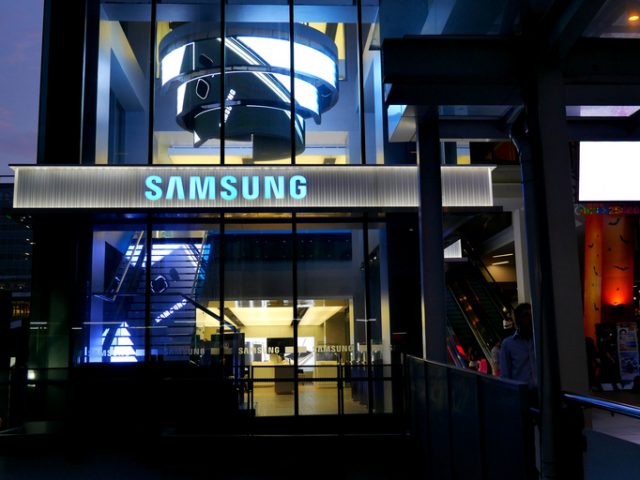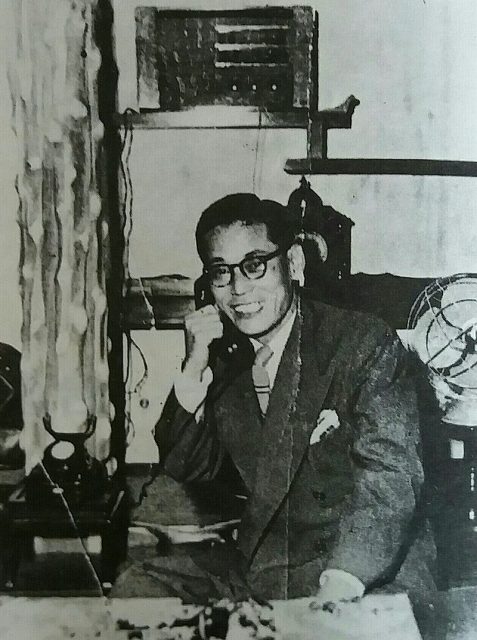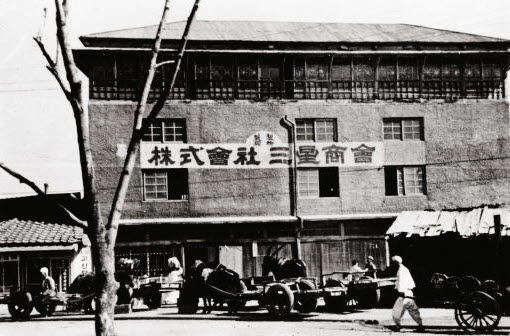“William the Conqueror, it is said, began by eating a mouthful of English sand.” The first Norman King of England then conquered the country gradually, meticulously.
Salman Rushdie used William of Normandy’s conquest of England in his Satanic Verses to emphasize how ladders are climbed and how great men achieve great things. It is by turning ideas into plans, putting plans into action, and most importantly, having the faith and courage to take the first step “even when you don’t see the whole staircase” (Martin Luther King, Jr.).
Two students from Stanford in the 1990s, for instance, invested everything so they could start a company together. All they had was a plan of how to fill a gap in the market and a measly $1,700 in their pockets, just enough to pay one month’s rent for a garage space, their new headquarters. Thanks to Larry Page and Sergey Brin and their willingness to risk everything in order to chase an idea, today we have Google.
And when Ho-Am Byung-chull Lee first founded Samsung in the 1930s in Sanghoe in Daegu, South Korea, the idea was to launch a local trading and shipping service and nothing more. Its flagship product? Nothing even remotely close to the things we are used seeing with the now-popular name written all over them, but noodles. As a matter of fact, it would take a while for Samsung to start sailing on the electric current.

Lee had a fortunate beginning in that he came from a rich landowning family. He was sent to study at Waseda University in Tokyo but returned home to Korea without graduating, and became engaged in several family business ventures before deciding to strike out on his own. The robust startup fund for Samsung Sanghoe of 30,000 won, the equivalent of around $5 million today, came from his family.
He began on March 1, 1938, with 40 employees under his belt, a small warehouse space in Ingyo-dong, and just a few trucks to transport food in and out of Degau. His bread and butter, so to speak, were to be flour and dried seafood. Easy for transport and cheap goods with long expiration dates. That saying don’t put all your eggs in one basket? Ignored. Lee invested everything in large quantities for discount prices. Soon enough, countless trucks were seen passing along the roads, exporting locally produced groceries all the way to China. But that was just the start.
Samsung (sum – three, sung – stars) also began selling its own homemade noodles stamped with the “Tristar,” the three-star symbol that was the company’s logo. In quick succession, the Korean symbol that signifies something big, powerful, and eternal, was representing a company that was on its way to being just that.
The company weathered a long, tumultuous period of political unrest and war that began in 1945. When Japanese colonial rule came to an end in Korea after World War II, Lee had the foresight to move his company headquarters to Seoul. He seemingly made close connections with the right people, and that allowed both him and his business to survive the ensuing Korean War, although he did move his HQ once again after the invasion of Seoul by North Korea. Samsung Mulsan, later renamed Samsung C&T Corporation, was launched as a chaebol (a South Korean business conglomerate, usually owned by an influential family) in 1951. Turning his previous company into one of its subsidiaries, Lee expanded Samsung into other prosperous markets throughout the 1950s and 1960s, including real estate, life insurance, and textiles.

By the end of the brutal war years, Lee had amassed a healthy bank balance–along with a reputation for corruption.
After the military coup in 1961, Lee returned from the safety of his second home in Tokyo and struck a deal with the new government. Keen to reinvent his company’s image as a key player within the new regime, the alleged corrupt old ways were swept under the rug, and Samsung’s new goal was to help rebuild Korea in the global market.
Samsung reached into even more market areas by the end of the 1960s, including petrochemicals. According to its official website, in 1969 they even began exporting military fabric to Ethiopia. The very same year, Samsung Electronics was added to the Samsung Corporation. Samsung produced their very own black and white television that year.
In 1970, predicting great potential in the electronics industry, Samsung drastically shifted focus to technology and invested everything in their electronics research and development department, which grew into Samsung Electronics Devices, Samsung Corning, Samsung Electro-Mechanics, Samsung Semiconductors, and Samsung Telecommunications, divisions that ultimately made Samsung without a doubt one of the world’s most powerful electronics brands and a dominant force in the industry.

So what is safe in the eyes of a parent is always a good thing to do. Is it always the best? No parent wants to hear the words: “Dad, mom, I’ve dropped out of school.” And no kid ever should without a valid plan in mind and adequate skills and know how to make it real. Lee Byung-chull’s reluctance to sit still in a classroom and go through another lecture proved to be a real blessing for him. And those three stars first stamped on a noodle pack and trucks representing something big, powerful, and eternal, today are long gone. They are replaced by a galaxy full of stars, the company’s most prized asset. And it is indeed big and powerful.
From noodles to smartphones, as of 2014 and according to the Samsung Financial Highlights of the same year, the company has over 489,000 people across 80 countries on its payroll, and it’s probably one of the most valuable and esteemed brands worldwide.
Forbes reported last year that Samsung has $174 billion in sales, $19 billion in profit, $217 billion in assets and a market cap of $254 billion.
Not bad for a college dropout’s noodle making startup.
